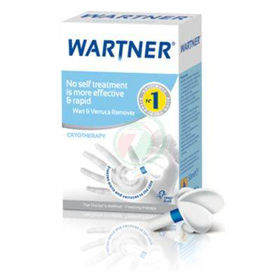Customer question:
Why is liquid nitrogen used in healthcare? Anonymous customer's question
Pharmacist's answer:
Liquid nitrogen is a cryogenic liquid that rapidly cools and freezes the material upon contact. Due to its extremely low temperature (-196°C), it has several applications in healthcare.
Cryosurgery or cryotherapy is perhaps the most recognized use of liquid nitrogen in healthcare. This is a technique in which liquid nitrogen is applied to abnormal tissues (often skin lesions such as warts, precancerous lesions, or certain skin cancers) to freeze and destroy them. When tissue is thawed after freezing, cell damage occurs, causing the treated tissue to die.
Liquid nitrogen is also used to store biological samples such as blood, semen, and other tissues at very low temperatures (cryopreservation). This preservation method allows samples to survive for long periods – sometimes years. This is especially valuable in infertility treatments, where embryos or sperm can be stored for future use.
Cryoanalgesia is a technique that uses the freezing effect of liquid nitrogen to damage or destroy peripheral nerves to reduce pain temporarily. This is a method that is occasionally used to manage chronic pain or to relieve pain during specific medical procedures.
In addition to removing warts and other lesions, dermatologists may use liquid nitrogen for actinic keratoses, which are precancerous growths on the skin. In research settings or clinical laboratories, liquid nitrogen can rapidly freeze tissue samples, preserving their cellular structure for microscopic examination.
Can liquid nitrogen also be used in home care?
While liquid nitrogen is primarily used in medical and industrial settings, it has had some limited uses in-home care. However, using liquid nitrogen at home has significant safety concerns and potential risks.
While liquid nitrogen has many medical uses, it is crucial to handle it with care. Liquid nitrogen can cause cold burns or frostbite in contact with the skin. In poorly ventilated rooms, it can also cause suffocation due to oxygen displacement.

Appropriate training and safety precautions are required when handling or working near liquid nitrogen, such as wearing appropriate protective equipment and ensuring good ventilation. If you are considering using liquid nitrogen at home, educate yourself on proper handling and storage. We must respect its potential dangers.
How does liquid nitrogen work?
Liquid nitrogen is a substance in a liquid state at an extremely low temperature, precisely -196 °C. Its unique properties and extremely low temperature give it a wide range of applications. Liquid nitrogen is cold because the molecules change when the gas becomes liquid. Nitrogen does not naturally occur in liquid form here on Earth. Humans have to prepare it with a technological process from the air.
Interesting reading: Anti-bloating pharmacy
Interesting reading: Isopropyl alcohol pharmacy










